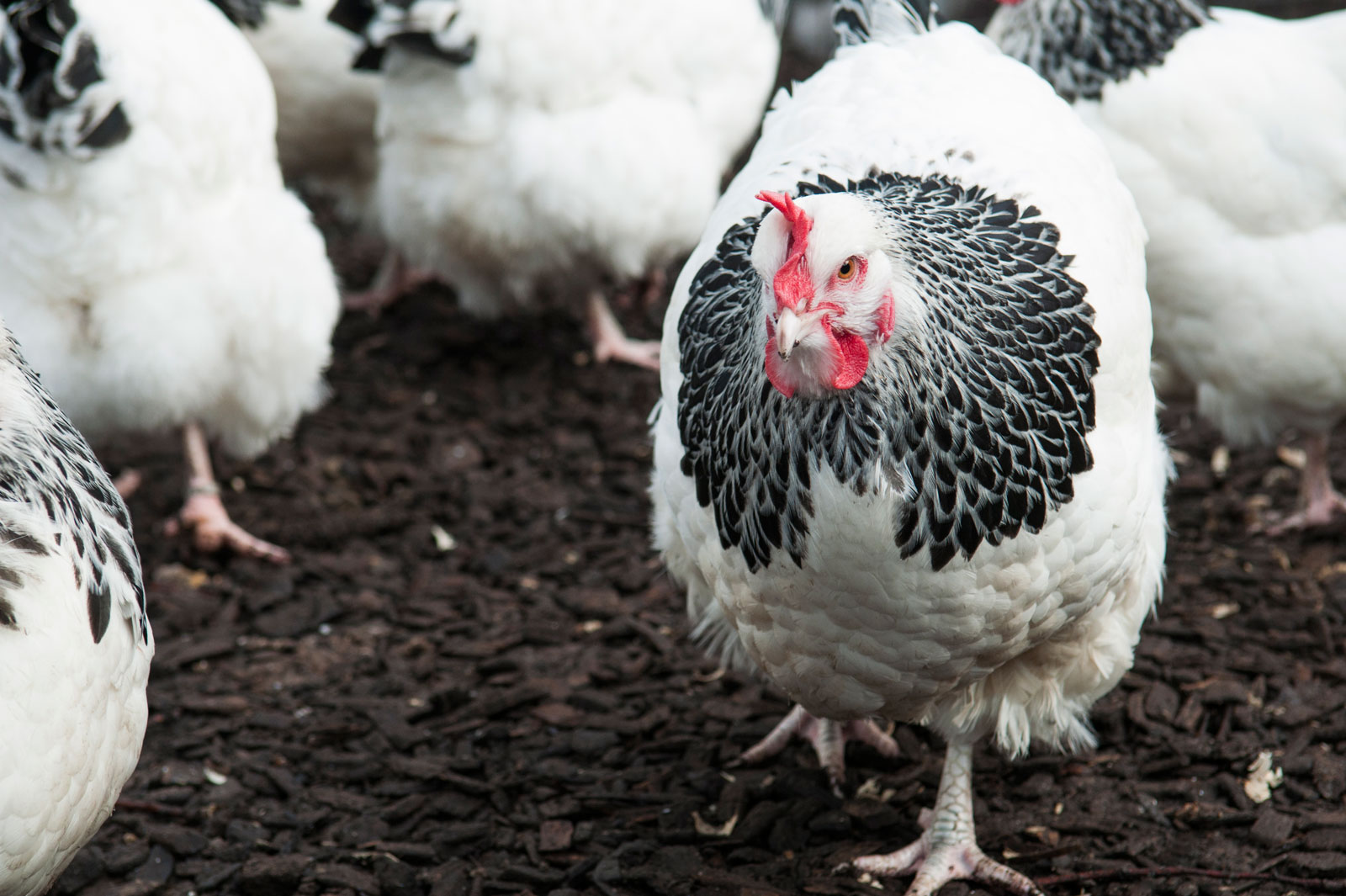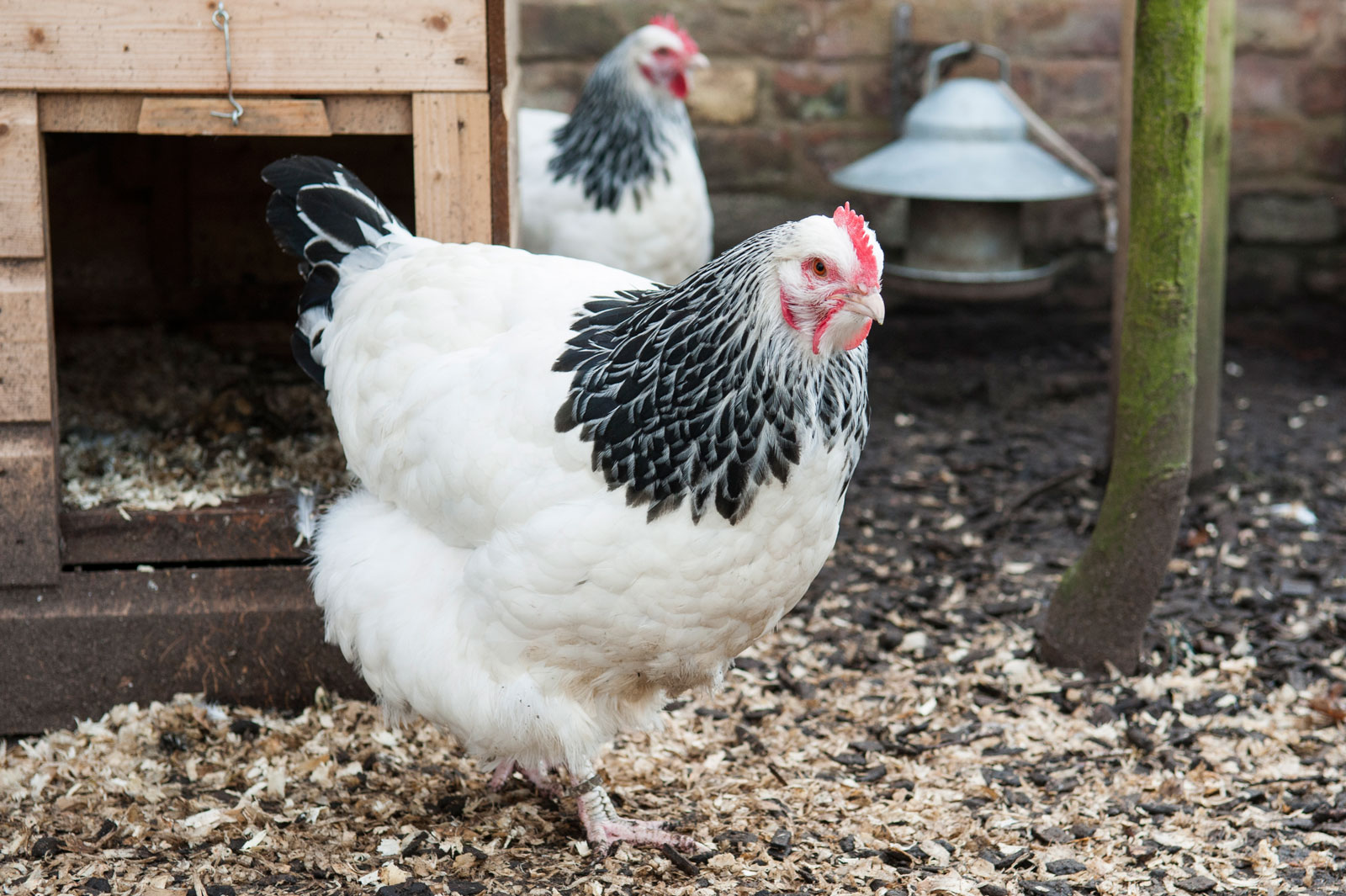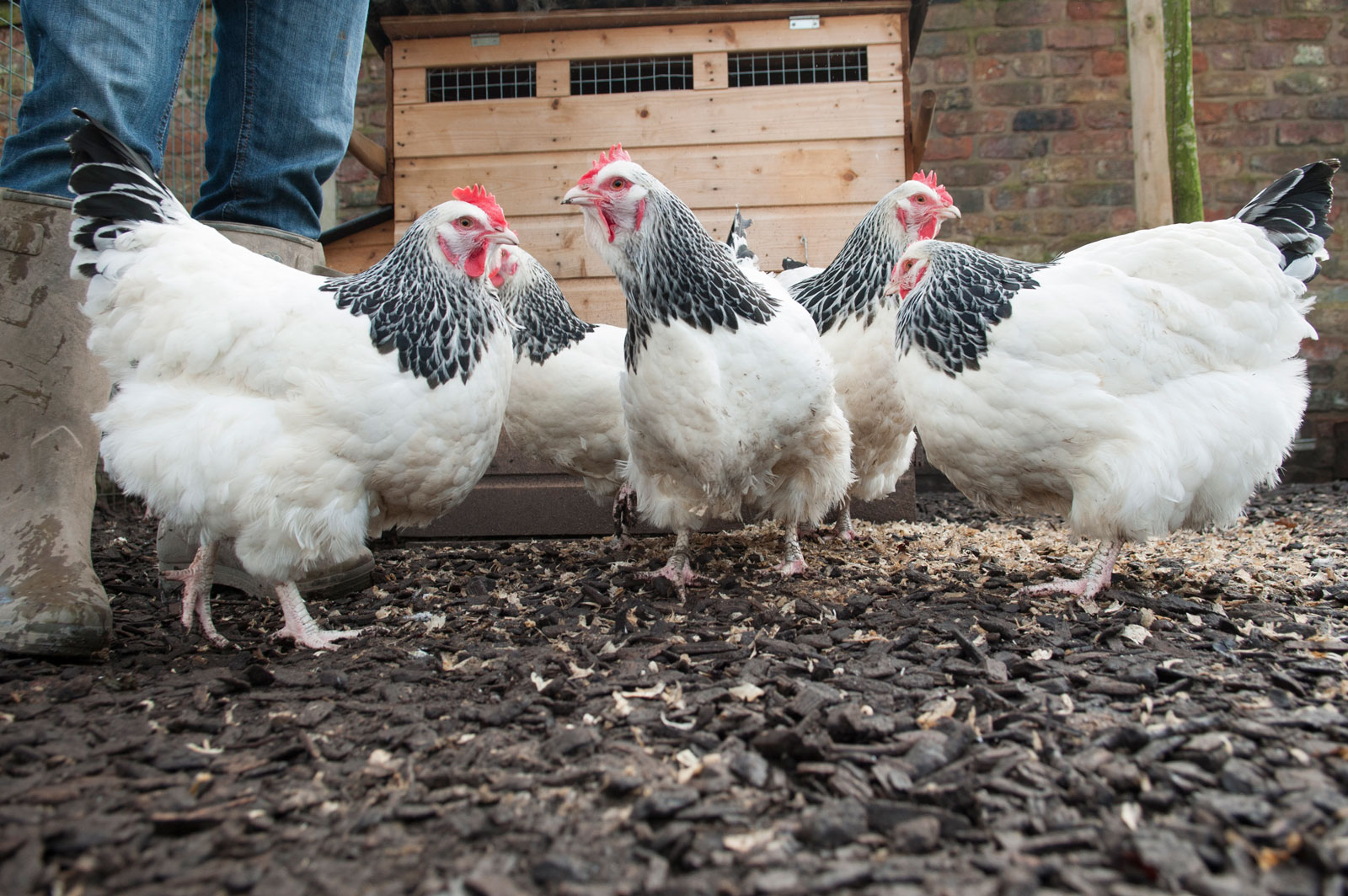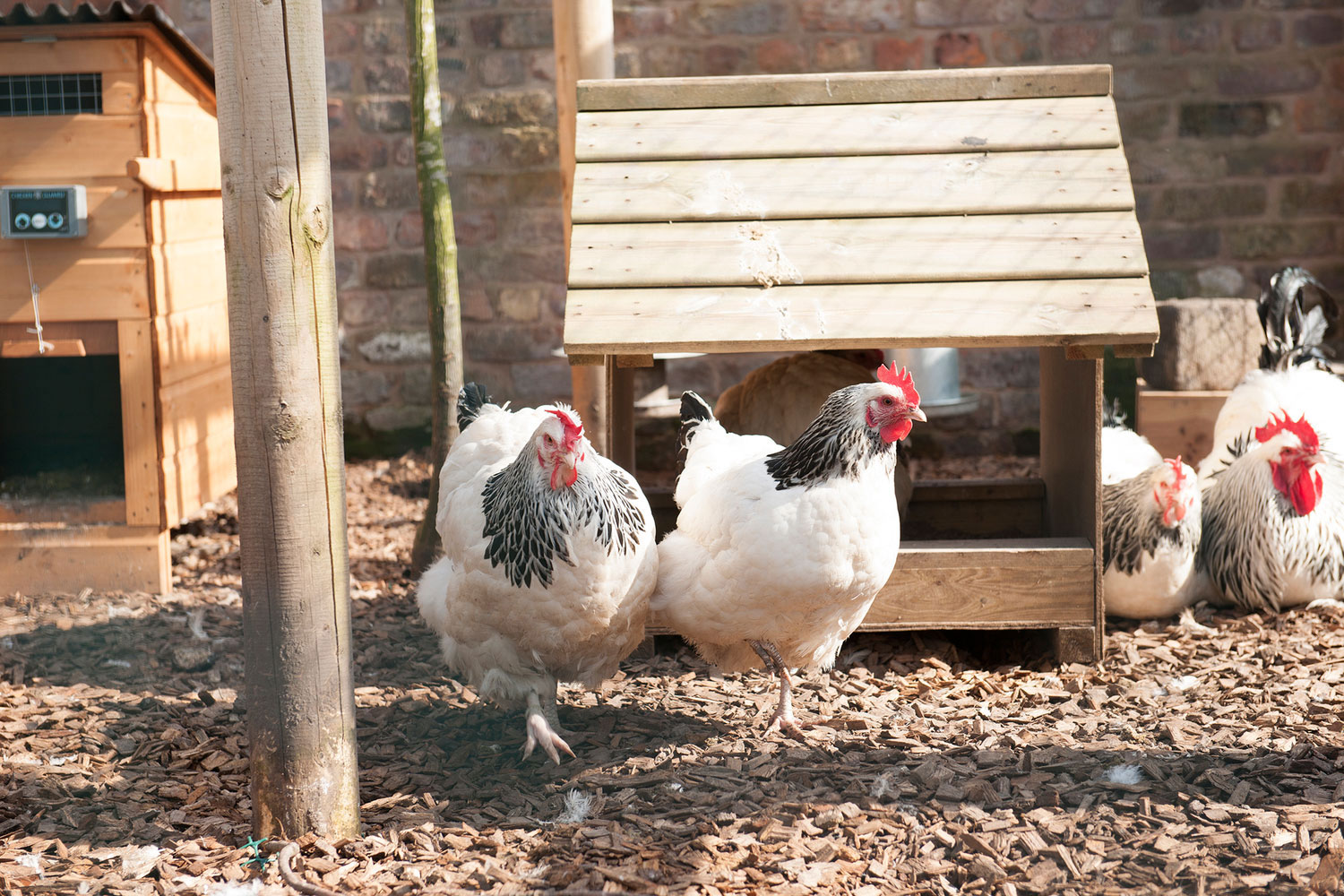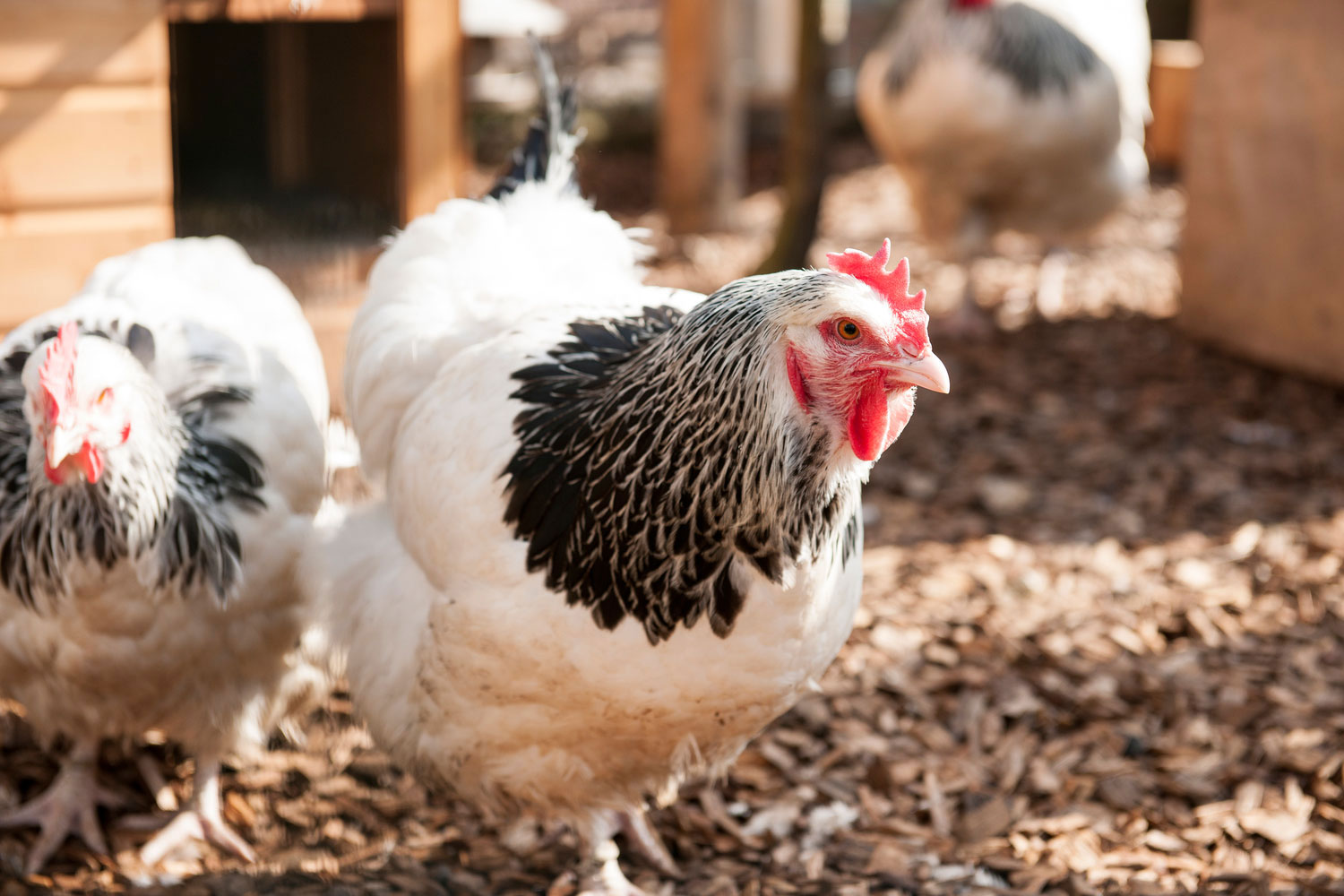About our Light Sussex Chickens
Breed Origin: UK Sussex
Uses: Utility - Dual Purpose
Weight: Large Fowl: 4.1Kg min. Hen: 3.2 Kg min.
Bantam Cock: 1530 g max. Hen: 1133 g max.
Egg Colour: Cream/Tinted
Egg Quantity: 170 -200 per Annum medium/large egg
Breed Colours : Brown, Buff, Coronation, Light, Red, Speckled, Silver, White.
Colours available on the Farm: Light
Temperament:
Sussex chickens are upright, alert, and pretty docile. This is the largest of the breeds we keep on the farm and they are happy in all types of housing from free range to mobile runs. They are Hardy, very friendly, good for beginners and rarely go broody.
About our birds:
Both hens and cocks are large, well-built and very friendly. Our breeding stock originates mainly from the retirement sale of Nick Smith’s flock (Nick Smith, from Herefordshire is a legendary breeder of the light Sussex). The Cock birds on the farm are large and very strong birds fortunately they are easily handled and can be quite tame.
Useful to know:
The Sussex chicken is a dual-purpose utility breed and relatively easy to keep. They have been around since the turn of the century but the roots of the breed go back to Roman civilisations in England, as domesticated poultry crossed the continents from Indo-China. They are good foragers. They are a popular white-fleshed chicken used for producing meat. The chicks of all of the varieties are fast to mature (for a rare breed), with the exception of the speckled that takes a little longer.
The light Sussex has a white body with a black tail and black wing tips. Its neck is white, striped with black and has a very striking appearance. They conform to breed standard and have a long back with the tail of moderate size being held at 45’ in males and 35’ in females. The feathers around the neck are called hackle feathers and each one is black with a fine white lace around the edge.
Juvenile Light Sussex often have black feathering showing through the white all over the body which makes the bird look unfinished. By maturity this moults out leaving a bird with black neck hackle edged with white and a black tail and black within the primary wing feathers. The feathering over the remainder of the body should be pure white throughout. There should not be any black markings or smuttiness on the back. The black neck hackles should not extend far on to the back as this makes the back look shorter and is generally seen as undesirable.
Light Sussex is often used to create hybrids and rarely go broody (there are always exceptions).
Unlike commercial farms we keep all the cockerels until mature and select the very best for our own breeding programme and either sell the surplus or use for table birds. The breed makes an exceptional table bird and can be of usable size by 20 to 25 weeks. The slower growth of these birds compared to today’s hybrids (commonly 9 to 12 weeks) combined with the natural free-range upbringing of these birds means that the meat has time to properly mature. This is definitely chicken as it used to taste 100 years ago.
